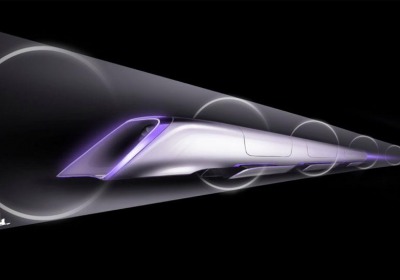Elon Musk unveils Hyperloop
Mon, 12 Aug 2013
Elon Musk has been teasing us with something called the Hyperloop for a while now, referring to some Goldbergian cross between a railgun and an air hockey table that would zoot us and scoot us from San Francisco to Los Angeles in a half-hour. Now, in a 57-page PDF available here or here, he's outlined just what Hyperloop could be.
Bad news? By the calculations Musk has put together in conjunction with his teams at Tesla and SpaceX, it'll take more than a half-hour to get from the Golden Gate to the City of Angels. The time required will be a whopping 35 minutes.
Boiled down, Hyperloop would work like this: first, you'd build a bunch of pylons roughly following the route of I-580 out of San Francisco and over the Altamont Pass into the San Joaquin Valley. Continue building pylons along the I-5 corridor to the foot of the Tehachapis -- largely in the median of the Interstate. Over the Tejon Pass and down into Santa Clarita, the Hyperloop path may deviate some from the road's right-of-way and run through a tunnel here or there. Once you've got your pylons and tunnels, you'll take a bunch of prefabricated steel tubes and weld them together.
If you just want to carry people from SF to LA, you'll only need a tube with a 7.4-foot inner diameter. If you'd like to carry vehicles as well (something Musk called “Passenger Plus”), you'll need tubing with a 10.1-foot ID.
Once you've got your tubes up on the pylons (fitted with dampers to mitigate the effects of earthquakes), you'll install solar panels on top of them, running the length of the system. They'll provide more than enough energy to power it; batteries (or perhaps compressed-air storage) can be used to run in inclement weather, tule fog and the abject blackness of the Central Valley night.
The panels will power linear induction motors in the tubes. Imagine an electric motor, cut and unrolled. The stator's attached to the tube, while the rotor's affixed to the passenger pod. Magnetic forces will keep the pieces in perfect alignment To decrease drag, you'll simply suck out most of the air in the system, giving it an atmospheric pressure 1/6 that of Mars -- a place Musk really, really, really wants to go.
With all that set, now you just need a 28-person pod capable of taking advantage of your brand-spankin'-new infrastructure. Musk's pod design features a front-mounted air compressor. Given the low-friction environment the pods have access to, the compressor isn't needed so much for forward propulsion as it is to suspend the vehicle inside the tube via air bearings. The air bearings will be mounted on skis designed to conform to the shape of the tunnel, keeping the pod centered.
So how fast will it go? Musk calculates that high subsonic speeds are the sweet spot, allowing for reasonable haste between San Francisco and Los Angeles without the need for an overly complex system designed for the unique stresses of supersonic forces. Between San Francisco and the Central Valley, Hyperloop will initially travel at 300 mph, accelerating to 555 mph once it reaches the more wide-open spaces of the East Bay. Once out in the San Joaquin, the pod reaches Vmax, hitting 760 mph. Up and over Tejon Pass, the pod slows again to 555 mph then decelerates to 300 for the 167-second descent into Los Angeles.
Musk also envisions spur lines that operate with less frequency than the SF-LA pods' every-30-seconds schedule. Pods from Sacramento would depart every 15 minutes for San Francisco. Fresnans could catch a pod to the City every 30 minutes or shunt themselves to Los Angeles every 15. In San Diego, there'd be an LA-bound pod every five minutes, and for the Angelenos with a jones for Vegas glitz, there'd be pods headed across the Nevada state line 12 times an hour.
In case of an emergency or system failure, the pods could deploy mechanical brakes, as well as electrically driven wheels. Interestingly, in the case of a medical emergency involving a passenger, Musk suggests that the pod would simply complete its journey; the 35-minute station-to-station transit, after all, is less time than it takes for an airport to rejigger its pattern for an emergency landing and have the plane taxi to the terminal.
So what about the ducats? Musk calculates that the whole system, including 40 capsules, would cost $6.1 billion. Which, to put it in perspective, is $310,400,000 less than what California is spending to rebuild the eastern span of the San Francisco-Oakland Bay Bridge. If the Passenger Plus model was embraced, Musk suggests a 10-billion-dollar bill could cover the cost.
And while tickets on California's proposed high-speed rail system will likely come in around 100 bucks each way, Musk suggests that a one-way fare on Hyperloop would cost just $20.
Of course, this is all theoretical at the moment and Musk admits there are flaws in the plan. So he's released it as an open-source project, noting he doesn't have the time or resources to put into such a brobdingnagian undertaking while devoting attention to his automobile and rocketship concerns.
He has, however, suggested that he'd be willing to construct test track, saying, “I am tempted to at least build a demo prototype,” perhaps at the SpaceX Central Texas test facility between Killeen and Waco.
The theories behind Hyperloop don't sound particularly outr
By Davey G. Johnson



